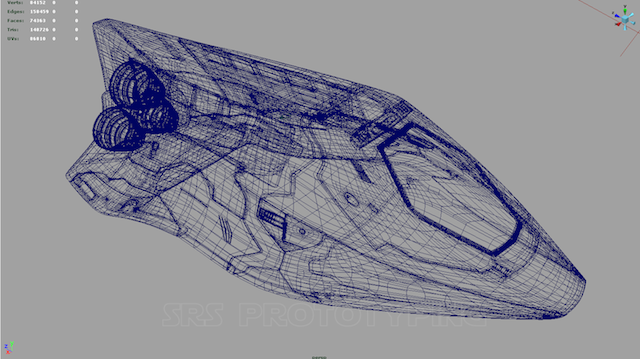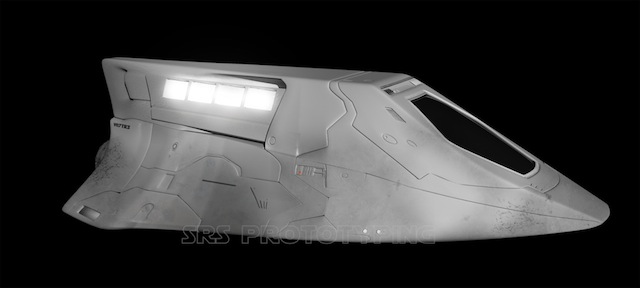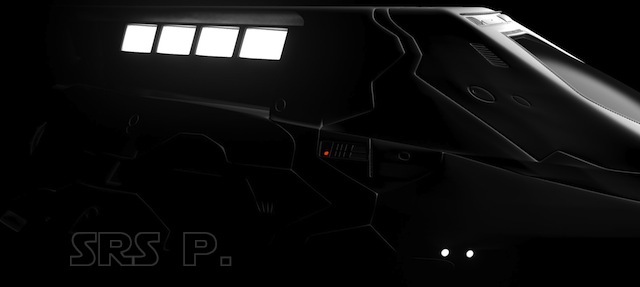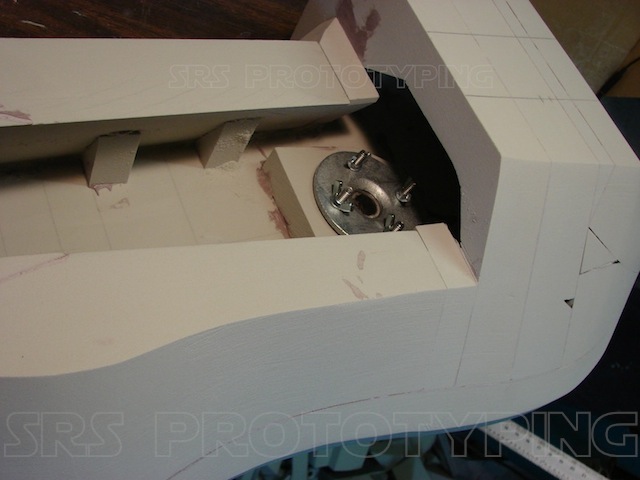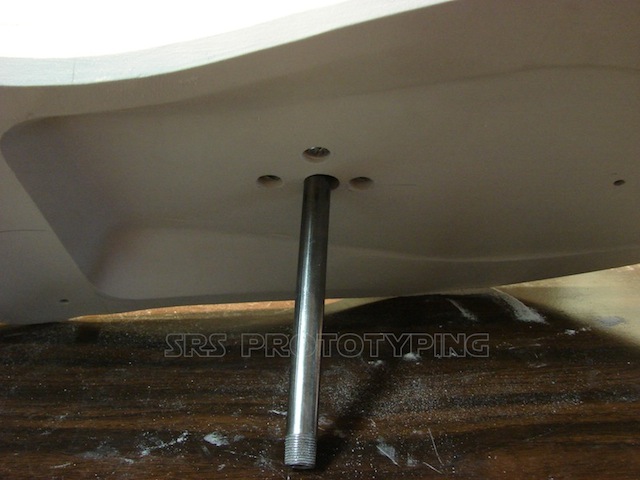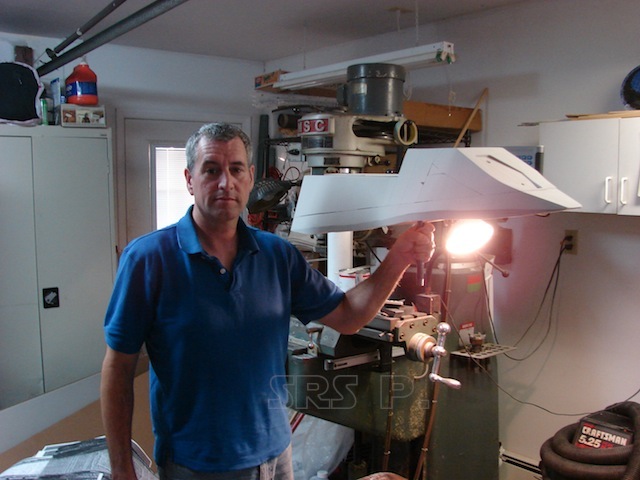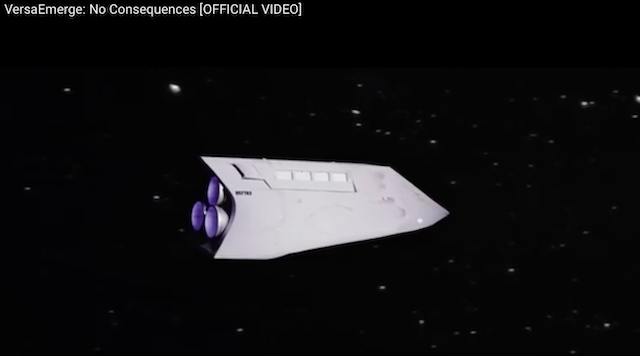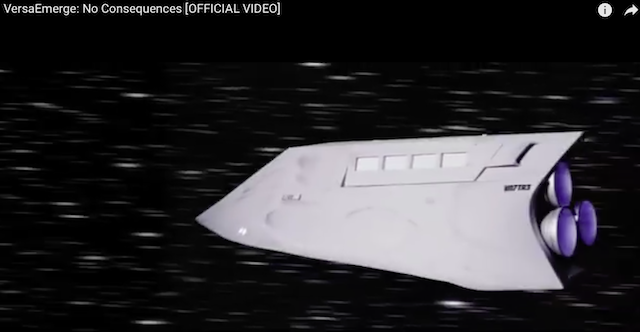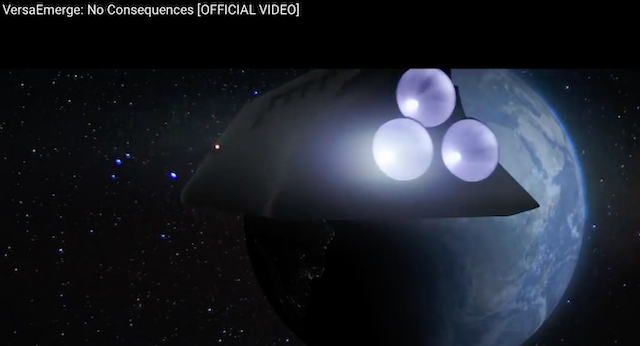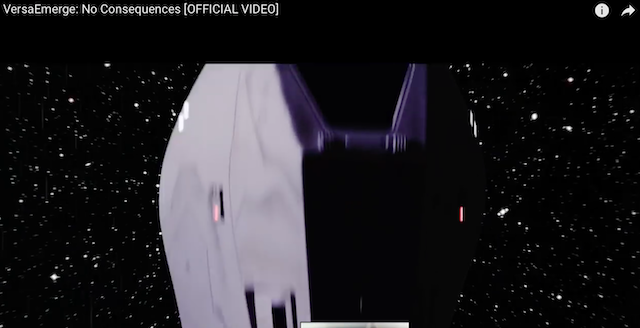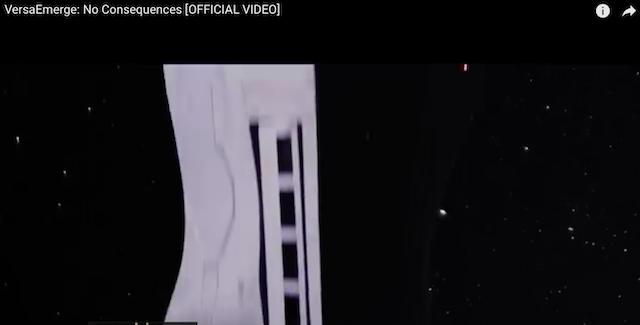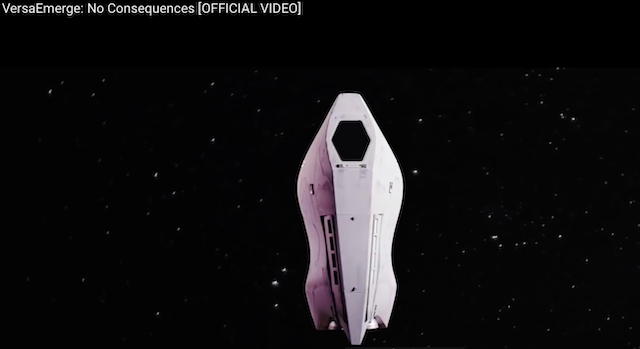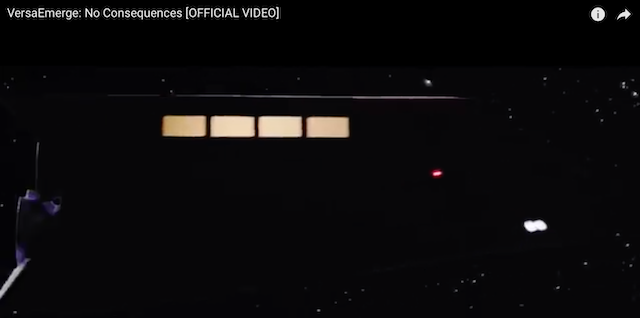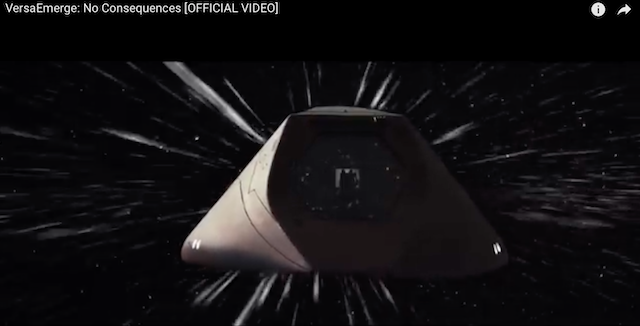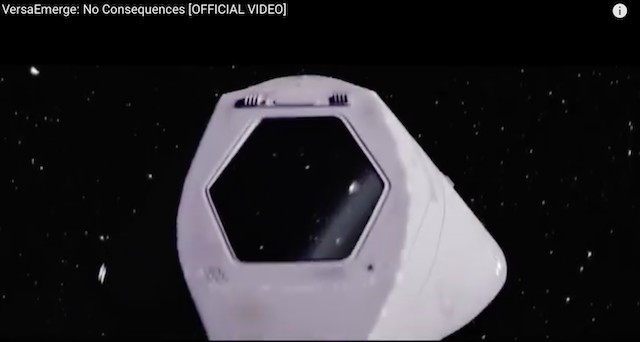I was contacted by a video production company to create a filming model that would be two to three feet in length, weathered and lighted. There were three sets of windows that needed to be adaptable for backlighting, a non-reflective black surface and green-screen. The model would have some exterior marker lights, three glowing engines and and interior light that was controllable manually to blink on and off. All this and two weeks to complete it and ship it!! Well, two weeks was not enough time, even if I had all of the materials on hand to start it, which I did not. I managed to get an extra week to work with. Most of that week was eaten up by ordering and waiting for materials to arrive and the days needed to ship it to California, which is why I requested that time. In all I had about 12 days to complete the model.
The client provided me with computer renderings, wire frames, etc. to work from. Most of the first day was spend enlarging printouts to the proper size and rough cutting the foam to size. I milled the bottom for the proper profiles and hand blended and shaped the sculpted form. The rest of the body was created by stacking and gluing layers of the foam together. You can see from the images that this was not a simple block type of design. It had complex curves that had to be created by hand and blended together for a seamless look. It was quite time consuming, which added to the pressure of meeting the deadline.
The construction phase was at such a fast pace that I do not have images of the model in a rough blocked out form. It wasn’t until I had the shapes of the hull completed that I stepped back and started taking pictures. These next images show the mounting system needed to adapt to the filming stands that would be used by the filming studio. Although made of foam, I chose a dense foam making the model heavy, so I had to get close to center to balance the weight.
For the three main engines, I used plastic drinking glasses that had hollow stems. They were cut to length, detailed with raised rings, and painted silver. An LED bulb was placed in the hollow stem of each engine.
I spent a good amount of time getting the side windows fitting and functioning as requested. Once I had the frame in place, I had to create a system to change out the different inserts. For the opaque insert, I used .010″ clear styrene sheet and gave it a light coat of white primer, enough to see through but not show the LED lights behind it. The green insert was cut from card stock and the black was vinyl. These inserts rested on a frame that was covered by an outer frame and was held in place by a couple of posts. It was simple and reliable. The front window had two inserts, black & green.
I needed a bit of custom work for the lighting system to meet the requirements of the client so I contacted Randy Neubert of Voodoo FX. He was easy to talk to and work with and turned the whole thing around in a matter of days, saving me hours of soldering and figuring out how to make it all work together. Again, I was moving too quickly to paus and take pictures as I was installing and testing the lighting, but it all worked perfectly! Although I knew there would not be any issues with the lighting rig, I made the top removable in case there was damage from shipping.
Once the lighting was working, I could complete the model. I used a brush on sealer recommended by the foam manufacturer to prep for painting. A few coats of gray primer and it was ready for weathering and markings. I used pastels because there was still a rough surface and I could work them into it, and it was faster than setting up an airbrush. The only markings on the ship were a set of letters and numbers spelled out by the client. I had vinyl letters made and put them on last.
Here are some screen caps from the official music video, and a link to the music video itself;
VersaEmerge: No Consequences [OFFICIAL VIDEO]
To ship this beastie, I purchased a plastic storage container and cargo straps. It arrived in one piece!

